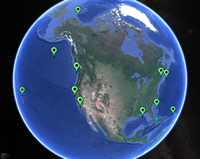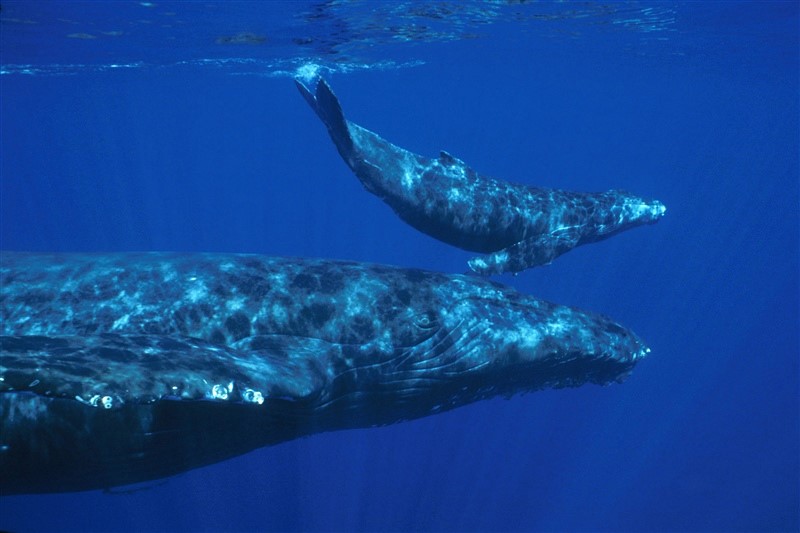In collaboration with many partners, NOAA’s ocean noise science activities work to fill critical knowledge gaps and build understanding of noise impacts over ecologically-relevant scales. Over time, the agency’s science activities have trended towards longer-term efforts that span larger geographic scales and leverage additional collaborators. Continuation of this trend will provide a more broadly applicable understanding of the impacts of noise on marine life and acoustic habitats.
The following are examples of science activities that support implementation of the Ocean Noise Strategy:

NOAA Noise Reference Stations
As a flagship project of the strategy, this network of hydrophones, managed by NOAA Research’s Pacific Marine Environmental Laboratory, NOAA Fisheries Office of Science and Technology, NOS’s Office of National Marine Sanctuaries, and DOI’s National Parks Service, has facilitated assessment of long-term trends in underwater ambient soundscapes in all major regions of the US since 2014. [Haver et al., 2018; Haver et al., 2019; Haver et al., 2020]
ONMS Sound Monitoring
Following the conclusion of the NOAA and US Navy SanctSound project in 2022, the NOAA’s Office of the National Marine Sanctuaries continues a sanctuary system wide monitoring program under the name ONMS Sound Monitoring. The program supports understanding and protection of sanctuaries including restoration efforts, effectiveness of and compliance with regulations, quantifying sanctuary usages, and assessing human impacts.
NOAA Fisheries Ocean Acoustic Program & Regional Science Centers

NOAA Fisheries’ PAM programs collect underwater sound recordings of the marine environment. Identification of the sounds produced by protected marine mammal species, fishes, humans, or the environment allows for an understanding of marine soundscapes and provides information on changes in species distribution, behavior and/or density. More information about region-specific research related to ocean noise can be found on the Regional Science Center websites: Alaska, Northwest, Northeast, Southwest, Southeast, Pacific Islands.
